What is a Chip?
A chip, also known as an integrated circuit or very-large-scale integration (VLSI), is an electronic circuit composed of thousands, millions, or even billions of transistors, resistors, and capacitors. It performs the same functions as larger circuits built using discrete (individually packaged) components, but an IC is an extremely compact device built as a single unit on a small piece of semiconductor material. The main raw material for manufacturing ICs is silicon; therefore, ICs are commonly referred to as “silicon chips.” Other materials such as germanium and gallium arsenide can also be used, but silicon is the primary choice for the following reasons:
-
Silicon is a semiconductor, meaning it can act as both a conductor and an insulator under certain conditions controlled in a process called doping. Doping refers to the addition of impurities to alter the electrical properties of the element.
-
Silicon is abundant on Earth, making it very affordable.
Chips are designed for specific purposes and can be used in various industries such as aerospace, automotive, telecommunications, computing, etc. One or more ICs, along with other components and connectors, are mounted on a printed circuit board (PCB) and connected with fine copper traces to meet application needs. A very common use of PCBs is as the motherboard of a computer.
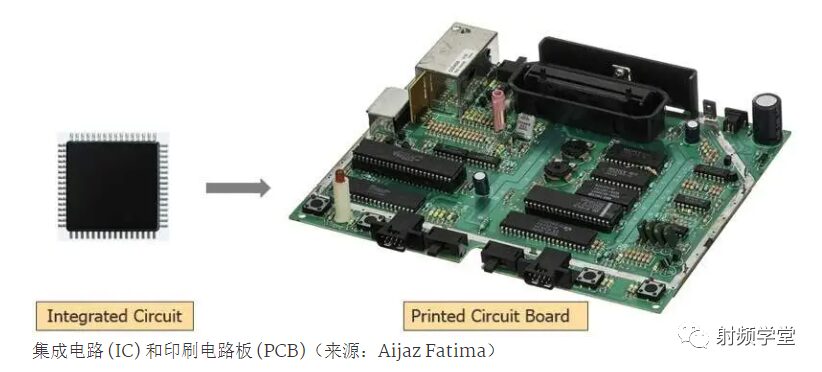
Classification of Chips

ASIC stands for Application Specific Integrated Circuit, referring to ICs designed for specific applications, primarily used in electronic devices such as routers, switches, modems, etc.
The main characteristics of ASICs are as follows:
-
Performs the same function throughout its lifecycle -
No processor -
Time-consuming and costly design cycle -
Mass production -
High speed and low power consumption -
Can be digital, analog, or both
ASSP stands for Application Specific Standard Part, designed for specific applications but not customized for a system or customer. ASSPs are special ASICs that can be used by multiple companies. The characteristics of ASSPs are similar to those of ASICs, primarily used in Ethernet controllers, PCIe controllers, USB interfaces, etc.
SoC (System on Chip): An IC that integrates a complete system is called SoC. It includes processors, memory, peripherals, and software. The processor in SoC can be a microprocessor (μP or MPU), microcontroller (μC or MCU), digital signal processor (DSP), or graphics processor. ASICs or ASSPs with processors are SoCs, so the characteristics of SoCs are similar to those of ASICs or ASSPs. They are primarily used in voice, video, and image signal processing, wireless communication, automotive applications, etc.
FPGA (Field Programmable Gate Array): FPGAs are programmable ICs. They have configurable logic blocks, configurable input-output blocks, and programmable interconnections. They are mainly used in prototype ASICs or SoCs, device controllers, signal processing systems, image processing systems, etc. The main characteristics of FPGAs are as follows:
-
Suitable for designs that require frequent customization
-
No processor
-
Design cycle is not time-consuming and cost-effective
-
Suitable for compact designs
-
Lower speed and low power consumption
Programmable SoC or SoC FPGA: An IC that integrates a processor and FPGA architecture is called a programmable SoC or SoC FPGA. This also includes peripherals, on-chip memory, FPGA-style logic arrays, and high-speed transceivers. They are primarily used in networking, aerospace, defense, etc. The main characteristics of programmable SoC/SoC FPGA are as follows:
-
Suitable for designs that require frequent customization and have processing capabilities
-
Smaller size
-
Higher bandwidth communication between processor and FPGA
-
Design cycle is not time-consuming and cost-effective
-
Low risk as they are reprogrammable
-
Lower speed and low power consumption
Microprocessor (μP or MPU): An IC that contains only a processor is called a microprocessor. It does not include memory (RAM, ROM, etc.) or any other peripherals. The main characteristics of microprocessors are:
-
Expensive
-
Higher speed and higher power consumption
-
Suitable for larger designs
-
Executes complex tasks
Applications: desktop computers, laptops, notebooks, cars, trains, etc.
Microcontroller (μC or MCU): An IC that contains a processor along with memory (RAM, ROM, etc.) and other peripherals is called a microcontroller. This is a general-purpose device that needs to be programmed for specific applications. Microcontrollers can be used in various industrial products. Microcontrollers are a scaled-down version of SoCs. The main characteristics of microcontrollers are:
-
Compact, as all peripherals are on the IC
-
Has a processor
-
Cheaper than microprocessors
-
Lower speed and low power consumption
-
Suitable for smaller designs due to their compactness
-
Executes less complex tasks
Applications: microwaves, washing machines, DVD players, mobile phones, etc.
How is a Chip Designed? The following diagram reflects the IC design cycle (the following sections explain each step):

IC suppliers meet with potential customers to determine the functions they are looking for and prepare a list of functional requirements. The system specification is the process of specifying the functional requirements (or specifications) of the system (IC) and defining its external interfaces.

Once the system specifications are determined, the architecture design process begins. This includes creating or purchasing intellectual property (IP) blocks, as well as defining software interfaces, timing, performance, area, and power constraints. Standard industrial IP modules can be obtained from IP suppliers.
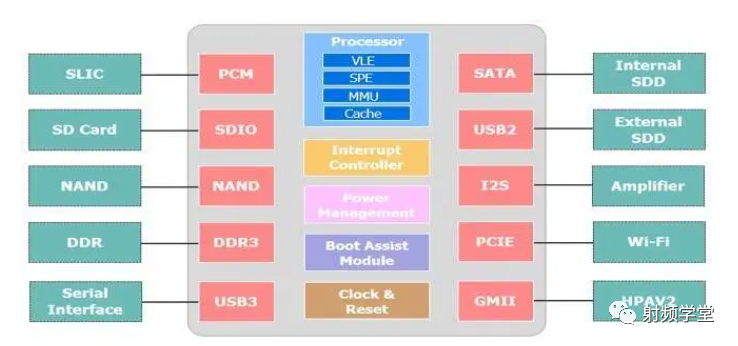
Architecture verification is the process of building a software version of the hardware system. This is created from functional models using high-level languages (such as C, C++, or SystemC). A software debugger is used to evaluate the architecture, performance, and power of the entire system.

Formal Verification/Property Checking
Formal verification is the process of statically verifying the correctness of the design using mathematical methods without using any stimuli or timing checks.
A method of formal verification called property checking is used to prove that the implemented system model meets the design requirements (or specifications). In property checking, property specification languages (such as PSL and SVA) are used to define system requirements, and a mathematical model of the implemented system is created. A model checker is used to compare the system requirements with the mathematical model to confirm that the system meets the requirements.
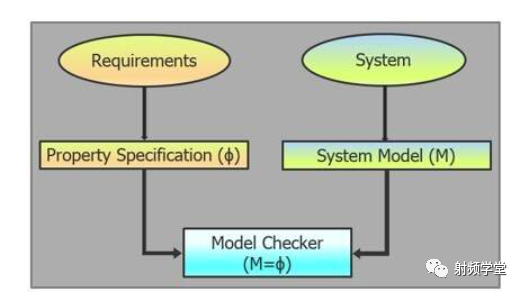
Design Input
After the architecture design and verification of the system, the next step is design input. This is the process of capturing the complete system design using hardware description languages (HDL) (such as VHDL and Verilog) and/or schematic capture. The design includes details of I2C input and output pins, IP block instances, design connections, clock and reset strategies, etc.

Functional Simulation
Functional simulation is the process of verifying the functional behavior of the design using a software simulator. It does not consider the timing delays of design elements. It verifies IC-level connectivity, IP blocks in the IC-level environment (general IP blocks are pre-verified), end-to-end functional paths, pad connectivity, module interactions, external module interactions, etc.
The testbench is a set of code used to check whether the RTL implementation meets (or does not meet) the design specifications. It contains valid and expected conditions as well as invalid and unexpected conditions to check if the design operates as intended.
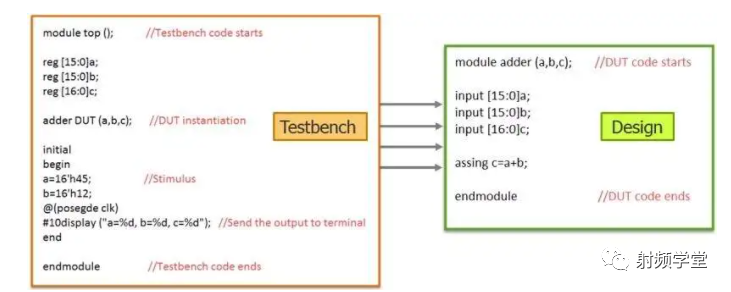
Formal Verification – Equivalence Checking
As previously mentioned, formal verification is the process of statically verifying the correctness of the design using mathematical methods without using any stimuli or timing checks.
A method of formal verification called equivalence checking is used to find the functional equivalence of the design by comparing it with a golden design. The following diagram describes the equivalence checking at various stages of the IC design cycle:

Silicon Validation
Silicon validation is the process of verifying the design in hardware before sending it to manufacturing. It can validate high-risk or newly developed IP and save costs of re-spinning the IC. Silicon validation can be performed using simulators or FPGAs.
Benefits:
-
Very fast compared to the emulation environment
-
Can probe a limited set of internal signals for debugging
-
Can validate software and application-level scenarios before tape-out
Limitations:
-
Hardware is expensive
-
Cannot validate analog IP blocks
-
System clock speeds are slower compared to real chips
-
Requires multiple hardware setups, especially when validation and software teams are distributed across multiple geographical locations
Simulation
Simulation is the process of verifying system functionality on a hardware device called a simulator. Simulators can run very large IC designs much faster than emulation and can run many IC designs simultaneously at different clock speeds. The following diagram shows the state-of-the-art simulators:

FPGA-based Prototyping
FPGA-based prototyping is the process of verifying system functionality using one or more FPGAs. The FPGA prototyping follows these steps:
-
Convert ASIC RTL (Register Transfer Level) code to FPGA RTL code. This includes using different memories, removing analog blocks, rewriting clock schemes, etc.
-
If the complete FPGA RTL code does not fit into a single FPGA, the code is partitioned into multiple FPGAs.
-
FPGA tools are used for synthesis and place-and-route.
-
Bit files are downloaded to the FPGA and the design is verified.
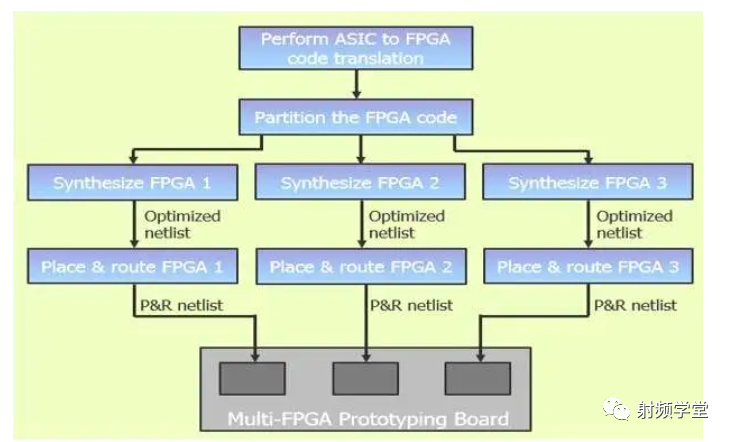
Synthesis
Synthesis is the process of converting the RTL code of the design into an optimized gate-level representation under a given technology library and design constraints. The following steps are performed during synthesis:
-
Translation: The design RTL code is translated into technology-independent Boolean equations.
-
Optimization: Optimize Boolean equations to remove redundant logic.
-
Technology Mapping: Map technology-independent Boolean equations to technology-specific logic gates with the help of design constraints and technology libraries.
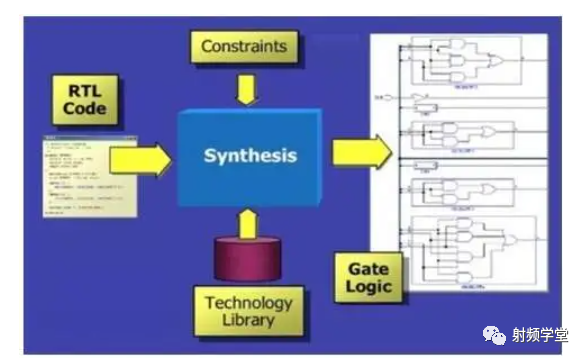
Static Timing Analysis (STA)
Static Timing Analysis (STA) is the process of verifying the timing characteristics of the design without providing any stimuli. STA is fast and thorough, but it does not check the functionality of the design. Electronic devices are driven by clock signals; thus, it is necessary to verify that the design operates at the specified clock frequency. STA is performed at various stages of the IC design cycle.
Design for Test (DFT)
The process of manufacturing ICs is not 100% error-free. Therefore, additional logic called Design for Test (DFT) logic must be inserted into the design to assist in post-production testing of the IC to identify manufacturing defects. When manufacturing ICs, the first step is to check for any manufacturing defects with the help of DFT logic. If no manufacturing defects are found, the functional correctness of the IC is then checked.
Pre-layout Simulation
Before sending the gate-level netlist for physical layout, software applications verify its functionality and timing behavior. This is called pre-layout simulation.
Physical Layout
Physical layout is the transition from the logical view of the IC to the physical view. The output of the physical layout process is a Graphic Data System (GDSII) file, a binary file format representing planar geometric shapes, text labels, and other information related to physical layout. The steps performed in physical layout are as follows:
-
Layout Planning: Identify major design blocks and allocate space to meet timing, area, and performance standards. IP structures, aspect ratios, and routing possibilities are also determined here.
-
Partitioning: Divide the IC into functional blocks to facilitate layout and routing.
-
Layout Routing: Place and connect design blocks without violating design rules.
-
Clock Tree Synthesis: Distribute the clock evenly to all timing elements in the design.

Post-layout Simulation
Post-layout simulation is the process of verifying the design after the physical layout of the design has been established. The checks performed in post-layout simulation are as follows:
-
Design Rule Check (DRC): Ensure the layout meets a set of rules required for manufacturing
-
Electrical Rule Check (ERC): Ensure the layout meets a set of electrical design rules
-
Layout versus Schematic (LVS): Ensure the layout is functionally equivalent to the design netlist
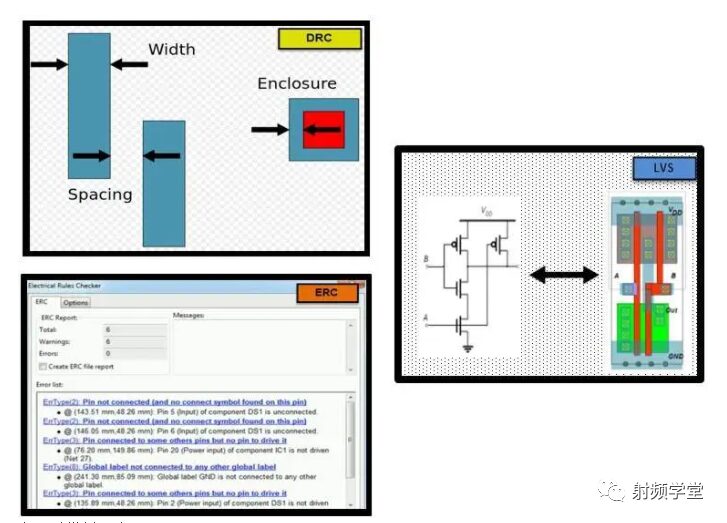
Integrated Circuit Manufacturing
After post-layout simulation, the layout netlist in GDSII file format is provided to the IC manufacturer (foundry). The process of providing GDSII files to the foundry is called tape-out. The IC manufacturing process is shown in the diagram below:

IC Tester
IC manufacturing is not 100% reliable, leading to many samples having manufacturing defects. Once ICs are received from the foundry, testers are used to filter out defective ICs. The tester provides input stimuli to the IC and verifies the output. It also verifies the electrical and thermal characteristics of the IC and finds the ideal operating conditions.

Silicon Post-validation
Samples that pass the tester are validated in a real environment. This is called silicon post-validation. In silicon post-validation, software tools on a computer configure the IC and download test code to the IC. The expected output is monitored, and all functions of the IC are verified. The following diagram describes the post-validation setup:

Summary
There are many types of ICs, each with specific characteristics: programmable or non-programmable, with or without processors, high-speed or low-speed, compact or bulky. The process of designing, manufacturing, and testing ICs is complex and detailed. The main contributors are the design and verification teams, IP suppliers, and IC manufacturers. Advanced EDA tools play a crucial role in reducing the time and effort associated with the IC design cycle.
References
-
https://anysilicon.com/ic-design-flow-an-overview/
-
https://www.synopsys.com/glossary/what-is-ic-design.html
-
https://byjus.com/physics/integrated-circuit/
-
https://www.allaboutcircuits.com/technical-articles/basics-of-ic-design-flows/
-
https://diaridelsestudiants.com/what-is-digital-integrated-circuit-design/
-
https://www.eeweb.com/introducing-the-integrated-circuit-ic-design-cycle/

【RF Materials】【Introduction to RF】【Chip Filters】